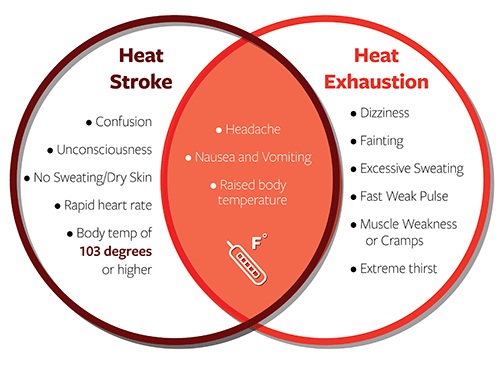Texans know all too well that the weather can change drastically throughout any given day. However, during the summer months, that unpredictability can lead to heat-related casualties, flash flooding and even hurricanes with winds exceeding 100 mph.
“In a state the size of Texas, it’s important to always be prepared for the unexpected, from heat waves to natural disasters. Texans should remember that the first step to protecting yourself and others is to be prepared,” said Carrie Kroll, senior vice president of advocacy and public policy for the Texas Hospital Association.
While we don’t always know when these extreme weather events will happen, responding to emergencies with precision and proficiency is a hallmark of Texas hospitals’ work. Whether it is an impending hurricane along the Texas coast or 100+ degree heat, Texas hospitals and public health officials work hard to ensure preparedness and safety for all unforeseen emergencies.
Extreme Heat
The Lone Star State is notorious for its soaring temperatures, making it crucial to prioritize heat safety during the summer months. Heat-related illnesses such as heat stroke and heat exhaustion are genuine concerns that demand attention.
Preventative Measures and General Tips:
- Stay Hydrated.
- Dress Appropriately.
- Plan Outdoor Activities Wisely.
- Create a Cool Environment.
It’s essential to familiarize yourself with the various symptoms and signs of heat stroke and heat exhaustion. Both have similar signs but knowing the differences can help save lives.

Hurricanes
In Texas, hurricane season generally starts around Jun. 1 and extends through November. Hurricanes bring storm surges, high winds with the potential to exceed speeds of 150 mph, inland flooding and tornadoes.
Although hurricanes can be tracked through the Atlantic and the Gulf, it’s hard for weather experts to estimate how many hurricanes — if any — will make landfall on any given year. Even with unknowns, those in direct pathways need to prepare for hurricanes as well as those as close as 100 miles inland.
Here are some tips for before, during and after a hurricane:
Before:
- Build an emergency kit and make a family communications plan.
- Determine the elevation level of your property and assess whether the land is prone to flooding.
- Make plans to secure your property, such as boarding up windows.
- Install a generator for emergencies.
- If in a high-rise building, be prepared to take shelter on or below the 10th floor.
- Consider building a safe room.
During:
- You should evacuate under the following conditions: If you are directed by local authorities to do so, or if you live in a structure that is prone to destruction under the circumstances.
- Follow “Boil Water Notices.”
- Stay indoors during the hurricane and away from windows and glass doors.
- Close all interior doors – secure and brace external doors.
- Keep curtains and blinds closed. Do not be fooled if there is a lull; it could be the eye of the storm – winds will pick up again.
- Take refuge in a small interior room, closet or hallway on the lowest level.
- Lie on the floor under a table or another sturdy object.
- Avoid elevators.
After:
- Continue listening to a NOAA Weather Radio or the local news for the latest updates.
- Stay alert for extended rainfall and subsequent flooding even after the hurricane or tropical storm has ended.
- If you have become separated from your family, use your family communications plan or contact FEMA or the American Red Cross.
- Drive only if necessary and avoid flooded roads and washed-out bridges. Stay off the streets.
More preventative safety measures can be found here.
Flooding
Texas is no stranger to flooding, and with the most recent July 4 floods, the time you have to prepare for a flash flood might be only minutes. Oftentimes, flash floods are difficult to predict, making it even more important to assess your risk for flooding.
Do you live in a flood plain, in a low-lying area, or along the coast? Are there creeks and streams nearby that fill up when it rains? Are there low-lying areas near or around your home’s perimeter?
Check out these tips from the Red Cross below:
Understand Your Flood Risk
- Learn about the types of flooding that can impact your home and community. Types of flooding include flash floods, river floods, storm surges, coastal floods, burn scars, debris flows, ice/debris jams, snowmelt, dry wash, dam breaks, and levee failures.
- Reach out to your local office of emergency management for advice.
- Know your home and community’s flood risk. Visit the FEMA Flood Map Service Center and search for your home using your address.
Make Plans to Stay Safe
- Flash floods can be sudden and violent. You may have little to no warning. Designate a place on higher ground that you can get to quickly. Plan to move to higher ground before flooding begins.
- River floods: Know if you are in an area that is prone to river floods. Review your evacuation plan so that you can leave quickly if officials advise you to evacuate.
- Storm surge: Be prepared to evacuate immediately if local officials advise. A storm surge can cause water levels to rise quickly and flood large areas in just minutes.
- Coastal flooding: Be prepared to evacuate immediately if local officials advise. Move inland before flooding begins.
No one expects to be caught in a natural disaster or be affected by extreme heat but with the right steps to prepare for the potential, you can protect yourself and those around you.
To help Texas hospitals provide uninterrupted care to the patients and communities they serve, the Texas Hospital Association has curated the following resources to assist hospitals in navigating emergency situations.
Related article from The Scope
10 Tips for Going Back to School Safely
As kids head back to the classroom, here are 10…
How to Prepare for Unpredictable Texas Weather
Texans know all too well that the weather can change…
Surviving the Summer: Extreme Heat Safety in Texas
A Texan’s guide to staying safe and out of the…
COVID-19 Heroes Day: Honoring Sacrifice
Updated Feb. 4, 2025. (Originally published Feb. 2024.) For health…
Winter Weather in Texas: How to Stay Warm and Safe
Inclement winter weather doesn’t happen often in Texas, so when…
Hospital COO’s Perspective on Emergency Prevention
Pamela Stoyanoff, MBA, CPA and FACHE is currently president and…






